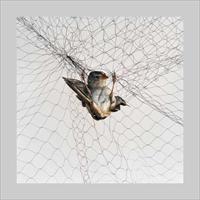Line fishers catching fewer ... birds

Seabird safeguards urged for net fisheries too
Safeguards introduced in recent years to protect seabirds from longline fishing activities are successfully reducing the number of accidental bird kills, and experts are now calling for similar measures to be used in other forms of industrial fishing in areas where seabirds are at greatest risk.
According to figures reported to FAO, collateral damage to seabirds by Chilean longline fisheries dropped from 1600 kills – including 1500 Albatrosses -- in 2002 to zero in 2006. Significant progress was also reported in the southern Ocean around Antarctica, where bird kills went from 6500 in 1996 to zero in 2007 and in Australian waters, where unintentional seabird “bycatches” dropped from 2000 to 200.
Measures to lessen the impact of fishing on seabirds, particularly albatrosses and petrels are currently being implemented or in an advanced state of preparation in ten countries – South Africa, Australia, Chile, Canada, Brazil, Japan, Uruguay and the United States, Argentina and Namibia. The measures are contained in National Plans of Action, or NPOAs operated by individual countries under an International Plan of Action (IPOA) for Reducing the Incidental Catch of Seabirds in Longline Fisheries developed by FAO and approved by member countries in 1999.
More effective
An expert consultation was organized by FAO in Bergen, Norway, earlier this month to help countries more effectively implement the IPOA-Seabirds. Among the key “best practices” guidelines suggested by the meeting was extending safeguards from longline to trawl and gillnet fisheries in areas of high seabird density.
In the absence of safeguards, the impacts of fishing on populations of already endangered seabirds may be significant. Particularly at risk are seabirds such as albatrosses, of which 18 of the 22 species are listed as endangered. However, says FAO Senior Fishery Officer Francis Chopin, “with industry and government working as partners, the impacts of fishing can be greatly reduced”.
In longline fishing, which targets fish such as tuna, swordfish and billfish, boats trail long lines bearing as many as 2500 baited hooks. Seabirds following the vessel dive for the bait and, in the absence of protection, become hooked and are drowned. In trawling, large birds such as petrels and albatrosses are unable to manoeuvre out of the way of the fishing wires while diving birds can become entangled in gillnets.
Umbrella system
One effective form of protection now being used in Chilean longline fishing for Patagonian toothfish is the so-called “umbrella system” in which the hooks are set in bunches shrouded by cone-shaped net sleeves that prevents birds from taking the bait when the longlines are dropped overboard.
Although originally designed to reduce whale predation, the umbrellas have been very effective at reducing bird kills. Other measures include trailing aerial streamer lines to discourage birds from diving for trailing bait.
 Back and Next - Back and Next
Back and Next - Back and Next See Also - See Also
See Also - See Also